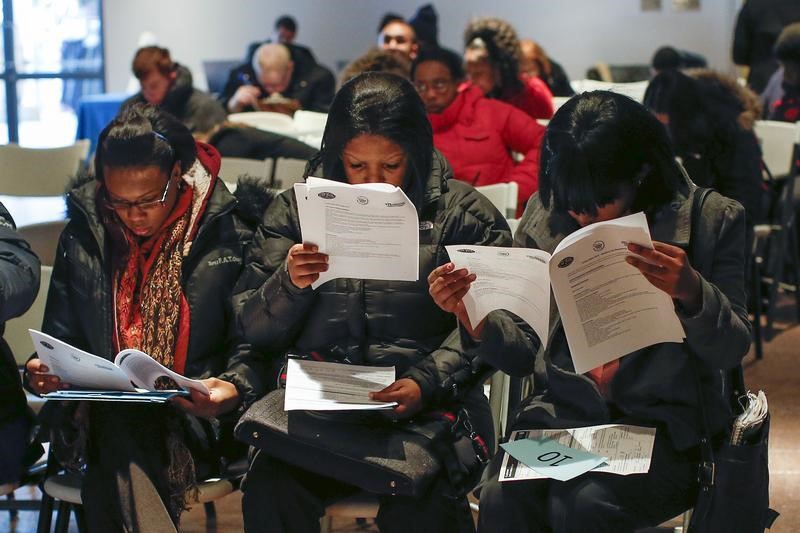By Lucia Mutikani
WASHINGTON (Reuters) - More American workers voluntarily quit their jobs in May, government data showed on Tuesday, a sign of confidence in the labor market that economists say will soon boost wage growth.
In its monthly Job Openings and Labor Turnover Survey, or JOLTS, the Labor Department said the number of workers leaving jobs of their own free will increased 212,000 to 3.3 million.
That lifted the quits rate one-tenth of a percentage point to 2.4 percent, the highest since April 2001.
The rise in the quits rate, which policymakers and economists view as a measure of job market confidence, bolsters expectations that wage gains will accelerate this year.
"Workers can hope to get the best bump in wages when they switch jobs," said Sophia Koropeckyj, a senior economist at Moody's Analytics in West Chester, Pennsylvania. "As workers seek to improve their lot by taking better positions they open up positions for others to climb up as well."
Wage inflation has remained moderate despite tightening labor market conditions. Annual wage growth as measured by average hourly earnings has struggled to break 3 percent, increasing 2.7 percent in June.
Labor market strength and steadily rising inflation likely keep the Federal Reserve on course to raise interest rates again in August. The U.S. central bank increased borrowing costs in June for a second time this year and forecast two more rate hikes by the end of 2018.
Workers voluntarily quitting their jobs in May were concentrated in the health care and social assistance, finance and insurance, utilities, transportation and warehousing industries.
The JOLTS report also showed there were 6.6 million unfilled jobs at the end of May, down from the record 6.8 million vacancies reported in April. Job openings remain elevated and continue to suggest a shortage of skilled workers, with the labor market seen as being either near or at full employment.
The decline in job openings came as hiring increased by 173,000 to 5.8 million in May. The hires rate rose one-tenth of a percentage point to 3.9 percent, the highest since March 2007. There was a job for every unemployed person seeking one in May.
"The decline in job openings appears to be related to stronger hiring, but it may also reflect businesses lowering their hiring standards," said John Ryding, chief economist at RDQ Economics in New York.
An NFIB survey published on Tuesday showed small businesses reporting the shortage of qualified workers as the main problem affecting their operations in June.
The JOLTS report showed there were 10,000 additional vacancies in the mining and logging industry in May. The federal government had 12,000 more job openings. But unfilled jobs in the information sector fell by 60,000 and vacancies in the arts, entertainment, and recreation industry declined by 27,000.
The Labor Department also said it had identified errors in the JOLTS data for the federal government from January 2011 to April 2018. It said these data had been "suppressed" from the database and would be reissued.
